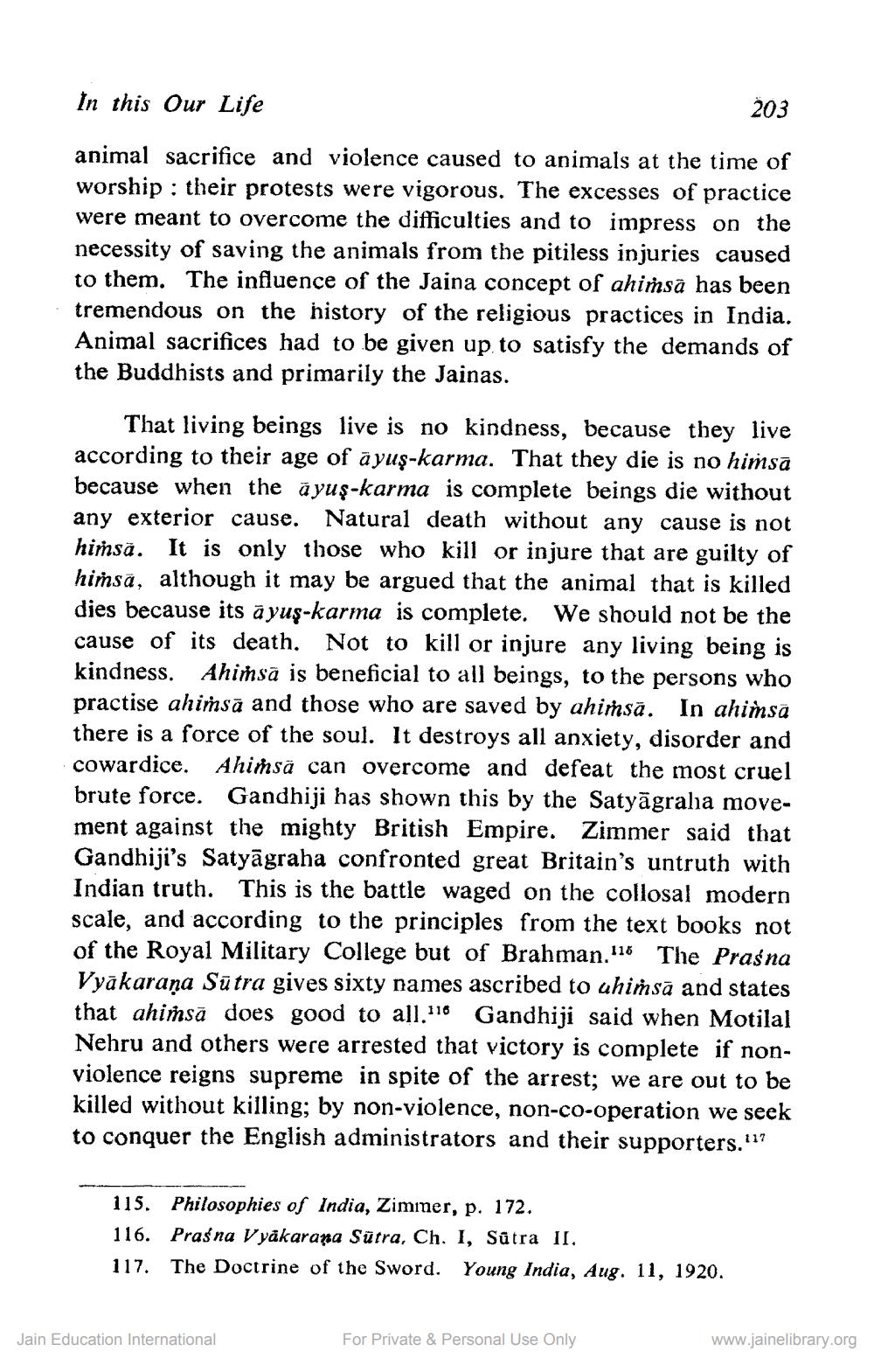________________
In this Our Life
203
:
animal sacrifice and violence caused to animals at the time of worship their protests were vigorous. The excesses of practice were meant to overcome the difficulties and to impress on the necessity of saving the animals from the pitiless injuries caused to them. The influence of the Jaina concept of ahimsa has been tremendous on the history of the religious practices in India. Animal sacrifices had to be given up to satisfy the demands of the Buddhists and primarily the Jainas.
That living beings live is no kindness, because they live according to their age of ayuş-karma. That they die is no himsa because when the ayuş-karma is complete beings die without any exterior cause. Natural death without any cause is not himsa. It is only those who kill or injure that are guilty of himsa, although it may be argued that the animal that is killed dies because its ayuş-karma is complete. We should not be the cause of its death. Not to kill or injure any living being is kindness. Ahimsa is beneficial to all beings, to the persons who practise ahimsa and those who are saved by ahimsa. In ahimsa there is a force of the soul. It destroys all anxiety, disorder and cowardice. Ahimsa can overcome and defeat the most cruel brute force. Gandhiji has shown this by the Satyagrahia movement against the mighty British Empire. Zimmer said that Gandhiji's Satyagraha confronted great Britain's untruth with Indian truth. This is the battle waged on the collosal modern scale, and according to the principles from the text books not of the Royal Military College but of Brahman.115 The Prasna Vyakaraṇa Sutra gives sixty names ascribed to ahimsa and states that ahimsa does good to all.116 Gandhiji said when Motilal Nehru and others were arrested that victory is complete if nonviolence reigns supreme in spite of the arrest; we are out to be killed without killing; by non-violence, non-co-operation we seek to conquer the English administrators and their supporters."1?
115. Philosophies of India, Zimmer, p. 172.
116. Praśna Vyakarana Sütra, Ch. I, Sūtra II.
117. The Doctrine of the Sword. Young India, Aug. 11, 1920.
Jain Education International
For Private & Personal Use Only
www.jainelibrary.org




